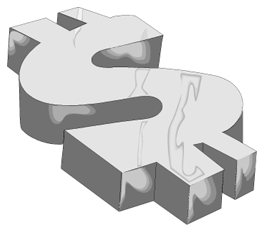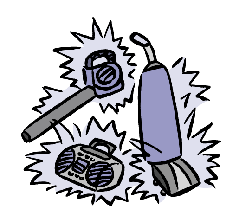
As community association boards of directors quickly discover, maintaining the common area/elements of a community association is one of the main purposes of an association. Common area/elements can be limited to something as simple as a flower bed at the community entrance or encompass, in a condominium regime, the entire building exterior including building roofs, stairs, siding/masonry, landscaping, and occasionally even roads. Funds must be available in order to expense the replacement, repair, and/or upgrade of these items when it becomes necessary to do so.
Planning Ahead for Replacement Expenses
A Reserve Fund is money, collected as part of the association's assessment, that is set aside specifically for the purpose of maintaining those long-term components of the association. It is important to understand that a replacement fund may be required by state law or a community association's documents or mortgage lender. Planning for the replacement of those items and calculating the amount of money necessary to actually make the repairs or replacement is the Reserve Plan. The depth to which a reserve plan is researched and planned will depend on the scope of the common area to be maintained.
Obviously, the more property an association must maintain, the more reserves/replacement funds the association will need to collect. There are two schools of thought regarding the building of a reserve fund. The most common and most fair way to build the replacement fund is to perform a reserve study, establishing the life expectancy of each of the common elements and associating a replacement cost with that element. Once both the replacement cost and remaining life are established, the annual assessment rate is set at an amount that would fund a portion of the necessary funds each year so that at the end of the useful life of the element, the funds are on hand to make the replacement. By transferring funds each year, the replacement cost is fairly distributed among those owners actually using the elements. A long-term owner would pay more into the fund, but that owner would have "used up" a greater portion of the useful life of the replacement item.
Each year, the replacement cost would be updated and compared to the funds on hand to determine if the association is on track for funding replacement items. Adjustments can be made with each budget year if a deficiency or surplus is noted in the replacement fund. An added benefit of a replacement fund that is properly funded each year is that this money can be invested to add interest or other return on investment and provide additional funds for the association.
Special Assessment Approach
Another approach to building reserves, although much less fair, is the use of a special assessment to fund the replacement of the item. Several complications exist with this method of funding. Often, the Board of Directors does not have the authority to approve a special assessment but rather must obtain a vote of the property owners. A special assessment affects only the current property owner, regardless of the amount of time spent as an owner. Many owners think of the assessment only in terms of higher expense to them and not in terms of the greater good or need for repair. Apathy is very common in this situation. Unless a condominium's roof is leaking or the association's pool is unusable, most owners do not believe an increased assessment is necessary for repairs or replacement. With this method, the board's hands may be tied and very necessary repairs may go undone for lack of funds. Deferred maintenance has the potential for increased costs down the road when the failure of common elements begins to affect the personal belongings of a specific owner (in the case where a roof replacement isn't done results in leaks into a unit).
There are certainly ways a Board of Directors can impress upon the owners the importance for approval of a special assessment, but were the replacement item properly funded each year, based on a reserve study or plan, the funds would already be available when the need ultimately arose.

Assessing the Situation
Unfortunately, many new board members inherit a property without proper reserves and are then faced with many items in need of replacement and a severe lack of funds to use for such. This is when the board must arm itself with as much information as possible before approaching the ownership with the issue. One way to assess the overall situation in very great detail is to engage the services of a Reserve Study Company. This study can be costly but will give the owners a true assessment (from an outside professional) of the condition of the property and the elements for which the association is responsible to maintain. Actual remaining useful life of each element is assessed. The actual replacement cost for each item and a priority level for replacement will also be determined. Is the item a liability item? Is it general deterioration? The company performing the study will give the owners a true to life picture of what they need and when they need it and ultimately the cost to perform the necessary work.
In addition to items requiring replacement or repair, there are the cosmetic issues of a property to consider. Evaluating the community's "wants" versus "needs" is best done with the input of actual owners. A committee might be established to poll the neighborhood and establish priorities among the owners. Owner priorities may include landscape upgrades or new signs. Perhaps a change is desired in paint color for the building trim. These items are more personal to the community and should reflect the desires of the community members. Perhaps the owners feel the current amenities are no longer adequate for a growing community. Owners may be willing to contribute an additional assessment amount in order to upgrade or increase available amenities (pool, playground, sports court, etc).
While a reserve study can help establish the cost for these items, owner involvement will ultimately get the projects approved and funded. Communicating the intent of the association to the owners and requesting feedback on the goals/plans of the board will keep both the board and the owners in tune with the pulse and desires of the association as a whole.
Related Articles Concerning Reserve Studies
- Reserve Studies-All You Need to Know!
- Why Have a Professional Reserve Study?
- The Great Debate: Should We Reserve for Siding?
- Reserve Now Or Pay Later
- The Case For Reserves: A Cautionary Tale
- Budget Preparation Tips
- HOA Website Can Save Money And Increase Communication
- How Neighborhood Assoc Websites Can Increase Participation
- A Condo Association Website Can Facilitate Communication
 Print
Print Email
Email







